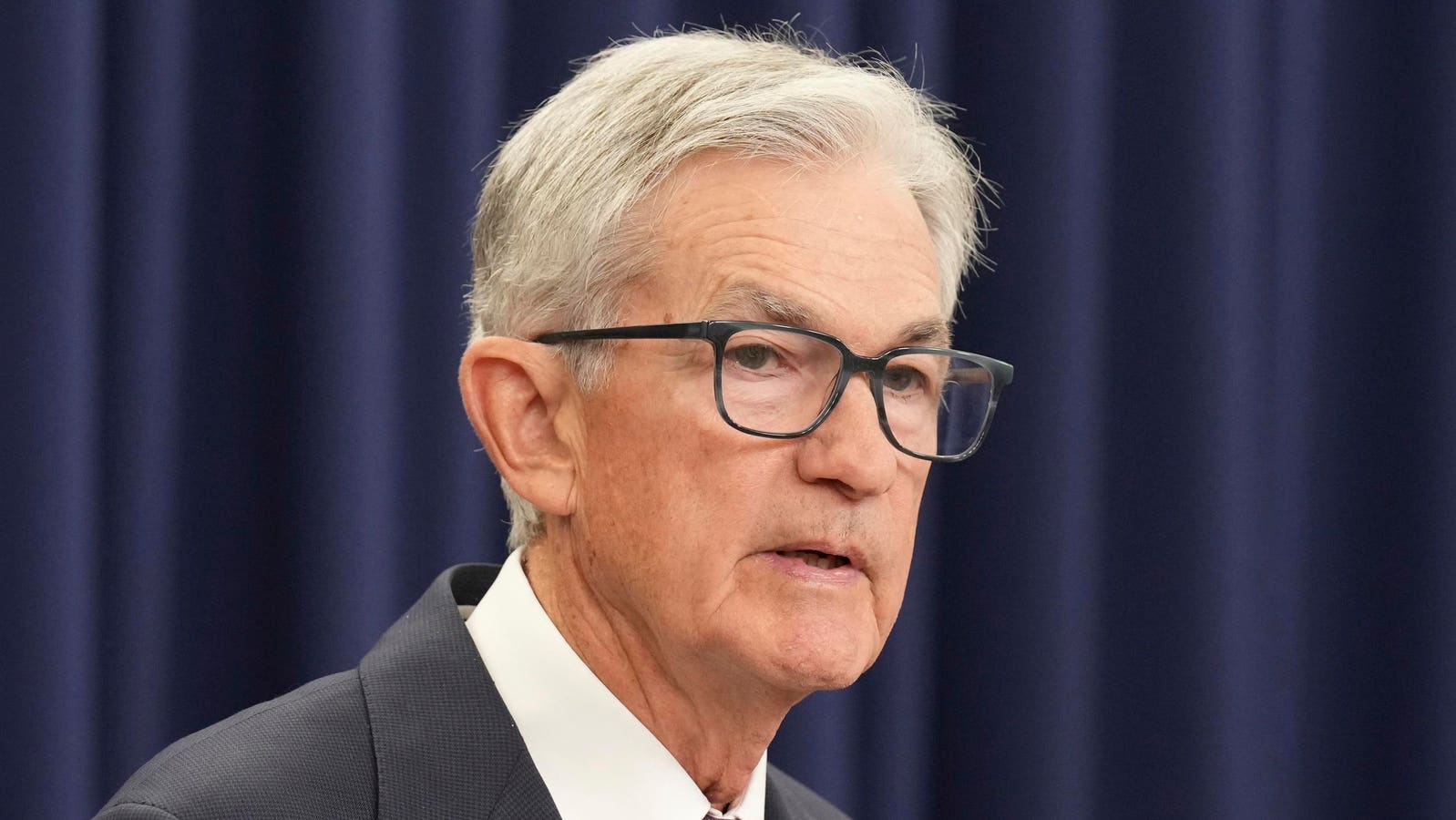Topline
While a majority of the Federal Reserve’s policymaking panel voted last month to lower interest rates, officials disputed how many additional cuts could come this year, with “around half” favoring two more easements by December, according to minutes from the panel’s meeting released Wednesday.
The central bank’s policymaking panel judged it would be “appropriate to ease policy further over the remainder of this year.”
Copyright 2025 The Associated Press. All rights reserved.
Key Facts
“Almost all” of the Fed’s Federal Open Market Committee expected a 25-basis-point cut to interest rates in September, while the “vast majority” projected two cuts by the end of the year, and “around half” expected three.
The FOMC, which includes 19 officials who participate in policy meetings, 12 of whom vote, expressed a “range of views” about “the degree to which the current stance of monetary policy was restrictive,” and “most judged that it likely would be appropriate to ease policy further over the remainder of the year,” according to the minutes.
A “dot plot” marking individual expectations from Fed officials indicated a 10-9 split, with the majority expecting two more quarter-point rate cuts by its last meeting in December, potentially lowering rates to between 3.5% and 3.75%.
Projections from the Fed suggest at least one interest rate cut each in 2026 and 2027, bringing the range to between 3% and 3.25%.
The FOMC will meet for two days starting Oct. 28, with a decision on interest rates announced the following day, before its final meeting this year on Dec. 9.
What Else Did The Fed Say?
A “majority” of participants at the FOMC meeting emphasized “upside risks” to inflation and noted that, while risks to the job market had risen, an uptick in unemployment and a “sharp deterioration” in labor market conditions were unlikely. Officials said they would continue to weigh the risks to both inflation and employment while considering how to adjust monetary policy.
What To Watch For
Fed Chair Jerome Powell, who said last month the central bank shifted its concerns from stubborn inflation to a weakening job market, will speak Thursday at 8:30 a.m. EDT to open a bank conference in Washington, D.C. Fed governors Michelle Bowman and Michael Barr are also scheduled to speak.
Key Background
The Fed voted 11-1 in September for a quarter-point interest rate cut—the first cut since December. Fed Governor Stephen Miran, appointed to the role by President Donald Trump just before the central bank’s meeting, was the lone vote against the quarter-point reduction, instead arguing in favor of a half-point cut. Trump has pressured Powell and the Fed to cut interest rates by as much as 2%, repeatedly calling Powell “TOO LATE.” Fed officials have shown a willingness to lower interest rates at least twice this year, though Powell has upheld a cautious approach to policy as unemployment rises and inflation remains well above the Fed’s 2% goal. Fed governors Philip Jefferson and Bowman have raised concerns about the weakening labor market as a reason to lower interest rates, as Bowman argued a “shock could tip it into a sudden and significant deterioration.”







